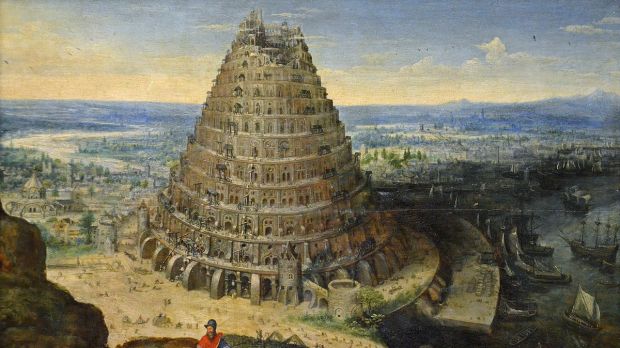A new archaeological discovery may lend credence to the biblical account of the Tower of Babel. A brick discovered in modern-day Iraq, is believed to have been used in its construction.
We know of the Tower of Babel from Genesis 11, which recounts the tale of its building and God’s displeasure with the presumptuous efforts of humanity to reach heaven. In the end, God destroyed the tower and scattered its builders, while subsequently dissolving their common language to prevent collusion on another similar construction. As we know from biblical records, it was King Nebuchadnezzar II who ordered the tower be built.
Express reports that according to a Smithsonian documentary, the brick in question was believed to have been commissioned by King Nebuchadnezzar. It was emblazoned with the king’s name, in a stamp that must have been applied when it was made. Furthermore, It was discovered still bearing an ancient mortar, bitumen, which was actually named in the biblical account.
In order to source workers for the project, Nebuchadnezzar invaded Jerusalem in 586 BC. He captured skilled Jewish artisans and craftsmen, and forced them into slavery on the construction site.
Express quotes Dr Irving Finkel of the British Museum:
“When you look at the early chapters of the Bible, it is clear that some of it is drawn from the Judeans’ own records, and some of it incorporates narratives which they must have encountered for the first time in Babylon, which were so powerful and striking that the authors, the philosophers who worked on the Hebrew texts, incorporated them to tell their own story.”
More evidence
This is not the first piece of hard evidence that has supported the existence of the Tower of Babel. In 2017, Aleteia’s Zelda Caldwell reported on a tablet that bore an image of the tower, along with an inscription that referenced it as the “Great Ziggurat of Babylon.”
The image features King Nebuchadnezzar standing before the structure. He is posed in his royal hat with staff in one hand and construction plans in the other. The inscription reads:
“NEBUCHADNEZZAR, KING OF BABYLON AM I – IN ORDER TO COMPLETE E-TEMEN-ANKI AND E-UR-ME-IMIN-ANKI I MOBILIZED ALL COUNTRIES EVERYWHERE, EACH AND EVERY RULER WHO HAD BEEN RAISED TO PROMINENCE OVER ALL THE PEOPLE OF THE WORLD – THE BASE I FILLED IN TO MAKE A HIGH TERRACE. I BUILT THEIR STRUCTURES WITH BITUMEN AND BAKED BRICK THROUGHOUT. I COMPLETED IT RAISING ITS TOP TO THE HEAVEN, MAKING IT GLEAM BRIGHT AS THE SUN”
The tablet was hailed as the first contemporary image in reference to the Tower of Babel. Prior to its discovery, in the private collection of a Norwegian businessman, historians could only rely on artistic representations.
Location
While the discovery of the brick is significant, experts are still debating on where the Tower of Babel was located. Many researchers believe that the tower would have stood within the borders of modern day Iraq, where the brick was discovered. Others, however, suggest that it could have been elsewhere in the Middle East.
Express notes that Anne Habermeh believes that Iraq would be too far south for the site to line up with the biblical account. She posits that the actual location of the tower would have been further northeast, within modern Syria. Experts noted that it will take further research to pin down the correct location.

